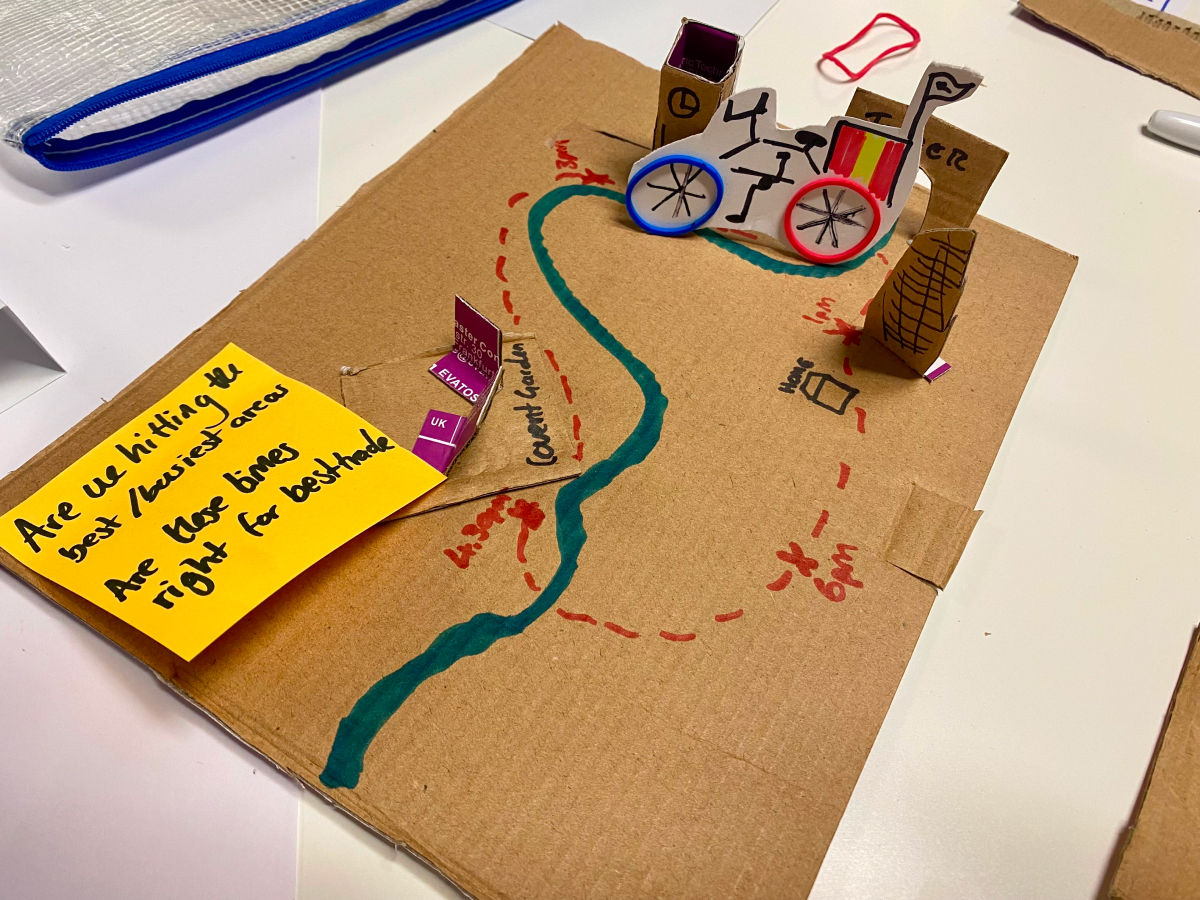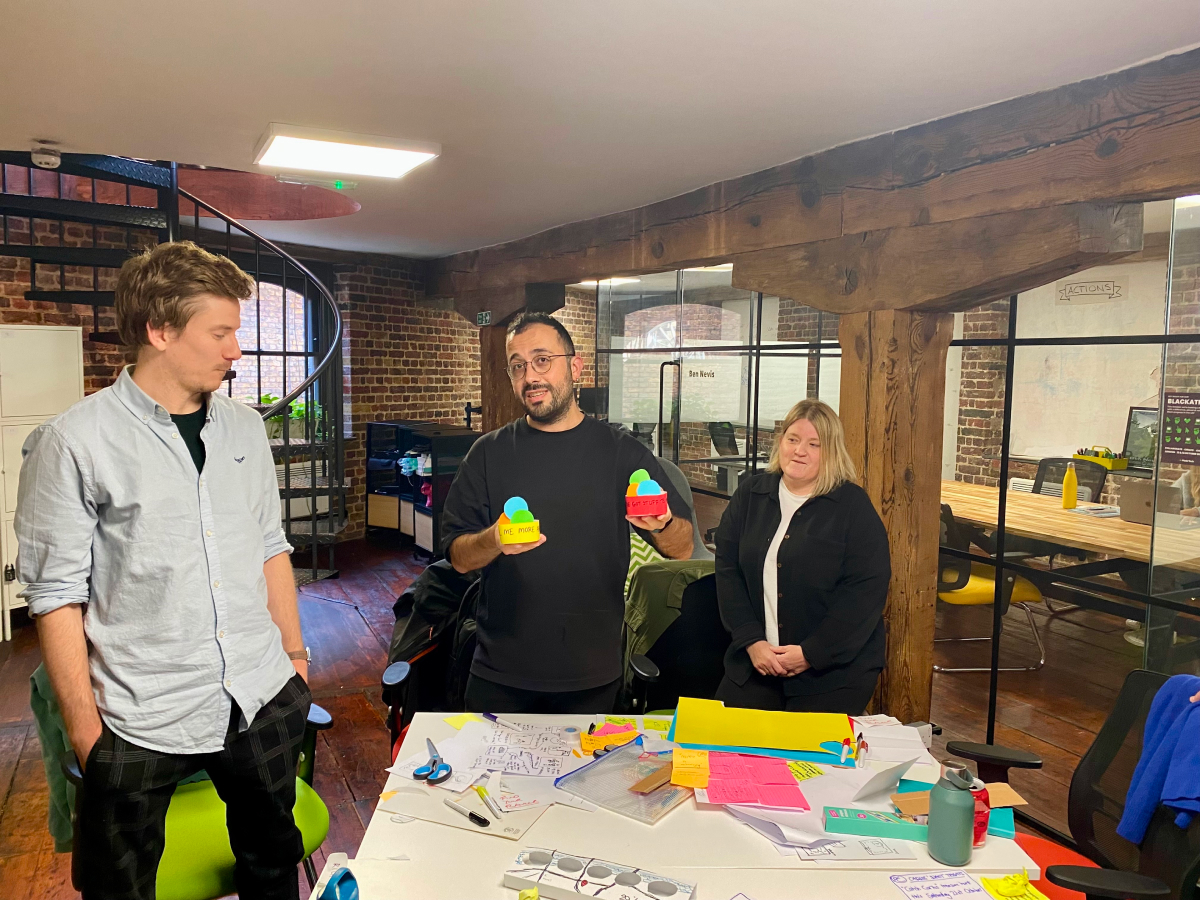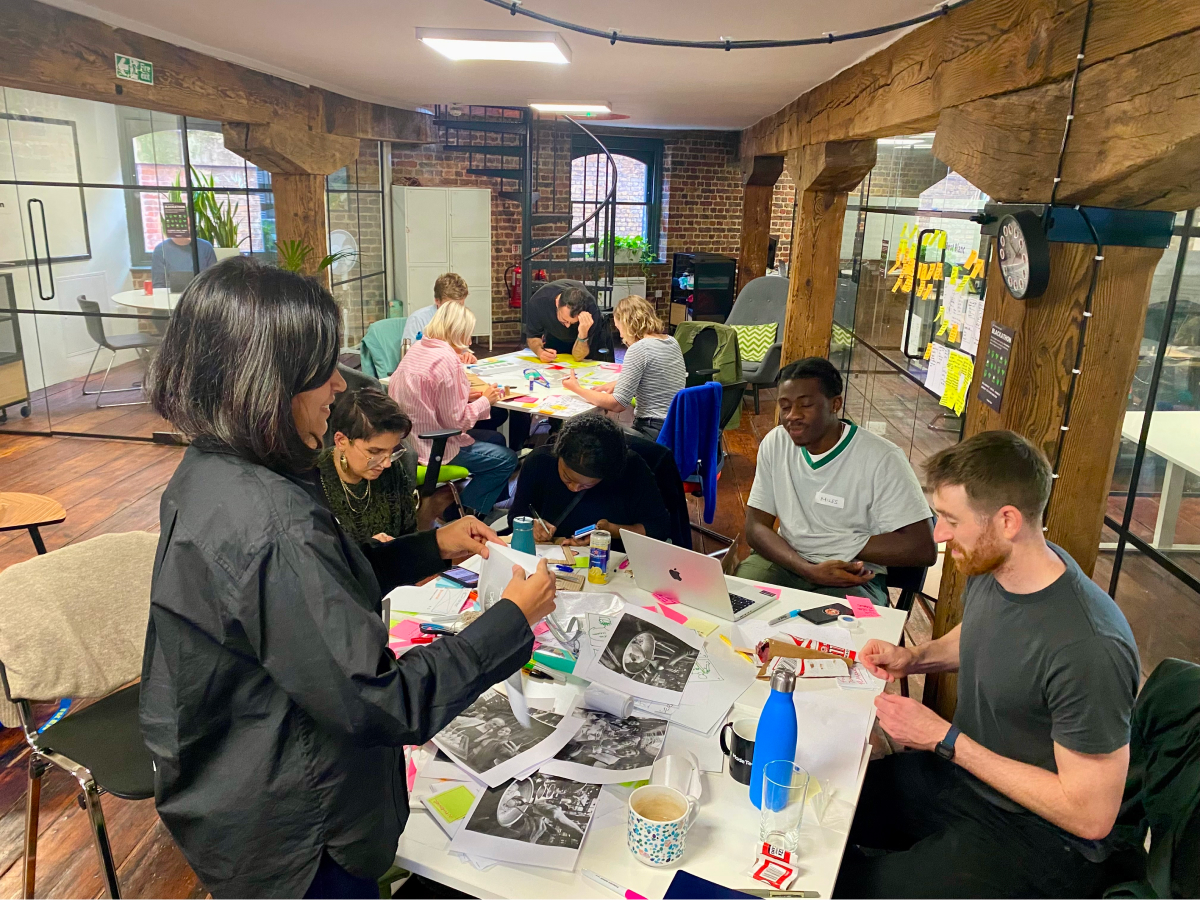Made Tech Design Away Day 2023
We got our Interaction and Service Designers together for a day of fun and creativity
Setting the stage
Over the last two years, Made Tech’s User-Centred Practice has grown. Now, we’re around 80 people scattered across the UK; it’s essential to come together occasionally to build relationships and hone our skills.
My fellow Principal Designers, Paul, Joanne and I created a day for our Interaction and Service Designers to play with ideation techniques by solving a fictional problem together.
Objectives
Our goals for the day were threefold:
- Encourage greater experimentation and “out of the box” thinking that would spill over into people’s day-to-day work.
- Deepen the interpersonal connections within our capability.
- Have fun!
Designing the day
To meet our goals, we invented an imaginary scenario around the start of an Alpha phase so that people could practice divergent and convergent ideation techniques.
We didn’t have time to create fake user research findings necessary to enable this, so I turned to AI. Amazingly, asking ChatGPT to give you a persona for an “Ice cream seller facing problems with new competitors” is very effective, although it still needs lots of human intervention.

Our problem centres around Carlos, an ice cream seller from Spain who owns “Carlos’ Sweet Treats” in Borough Market in London. His passion for international flavours, love of community and distaste for technology made solving his problem challenging.
I heavily edited Carlos’ persona to be shorter and more readily understood; we knew we were asking a lot from people during the day, so we had to make information actionable. Using the same method, I created personas for two potential customers, Emily and Jack.
Once we had a problem, Paul, Jo and I devised a running order for the day. We wanted participants to use varying ideation techniques to push their thinking. Getting this right took a long time. I iterated the plan multiple times before we all felt happy with it. Ideally, I should have done some testing, but this was impossible; I was busy, and planning the day threatened to hoover up all my time.

Come as you are
Paul and I agonised over how to make the day inclusive. People have different expectations and needs regarding in-person days, and we wanted to make participation as comfortable as possible.

We didn’t make attendance mandatory; we wanted folks to want to come. Instead, we repeatedly advertised the day on our internal Slack and online community meetups, emphasising the element of fun.
I wrote a “What to expect from the Design Away Day” guide detailing the day. I linked the personas and constraints so those who wanted to prepare could do so.
Before we kicked off the tasks, we shared some “Thoughts for the day”:
- Today is not a test or a competition
- There’s no “right” way to participate
- Design is chaotic, and that’s OK
- We’re here to have fun
I hope this was effective in helping people feel included. I recently went to the one-day, in-person Co-design with Care and was impressed with the attention given to enabling people to participate.
Finally, In an hommage to digital government projects, I created a mission patch featuring our community mascot, printed them as stickers and gave them out on the day.
Creative chaos
We structured the day as a microcosm of the design thinking process. We explored various ideation techniques, starting with divergent thinking, from mapping the as-is to crafting the quirkiest ideas imaginable.
We did our best to refrain from constraining people’s ideas before lunch. We hoped these ideas would continue to marinate while folk munched on their Pret sandwiches.
The afternoon was all about convergent thinking, feedback and prototyping. We deliberately set fewer tasks in the afternoon, instead engaging people to work in their groups to refine their best ideas.
The groups brought their ideas to life through hands-on prototyping using various low-fi materials.
Our day culminated in some remarkable demonstrations of the teams’ work.



Takeaways
We ran a survey to understand if we’d achieved our goals and how we might improve next time.
The feedback showed that we could have done more to explain why we’d chosen the specific activities and how these might be used in the real world.
People pointed out that they saw the actual value of an in-person day as relationship-building rather than being overly productive. The response to this aspect of the day was far more emphatic.
In a post-covid world, human connection and bringing people together is the big win of a day like this.
For me, the impact of today is my sense of community and feeling closer to others in the design practice, which will help with collaboration, sharing, learning, etc, from now on.Participant